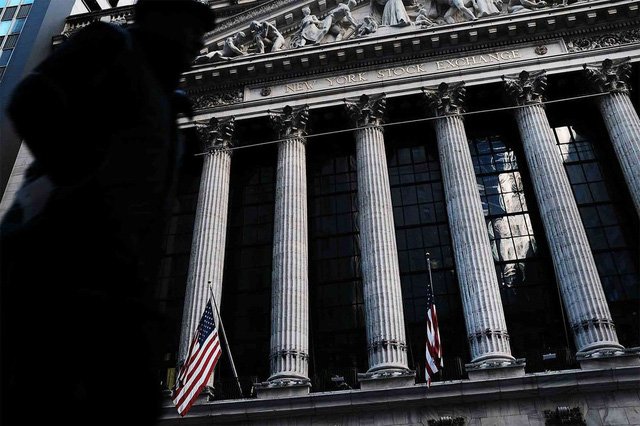
The New York Stock Exchange in Lower Manhattan. Following a drop of more than 600 points on Friday, the Dow Jones industrial average plunged 1,175 points on Monday. Credit Spencer Platt/Getty Images
Pothole or abyss?
After the Dow Jones industrial average index shed 1,175 points on Monday, extending a rout that began in earnest last week, investors will be wondering what size hole the market has just fallen into.
Of course, it’s impossible to tell exactly where a bottom is, but there are ways to assess whether a sell-off will gather steam or burn out.
What started this panic?
Nearly all the economic news has been good in recent weeks, but in the often-neurotic world of investing, the news has perhaps been too good. Two reports last week that wages are growing at a solid pace, for instance, helped prompt the latest selling.
Investors fear that an increase in wages, especially at a time of low unemployment, might lead to higher inflation, which in turn could prompt the Federal Reserve to increase interest rates more quickly than expected. The higher borrowing costs would then crimp companies’ investment plans, leading eventually to lower economic growth over all. There is no evidence that this chain reaction has begun, but when the stock market is in a skittish mood, it does not wait around for the next economic release.
Continue reading the main story
What would change the market’s mood?
The market will stop sliding when investors start to see bargains and start buying in earnest. But on certain measures, stocks are still expensive.
One way to value companies on the stock market is to compare their share prices with their earnings. If, say, a company made a dollar per share last year and its stock trades at $20, it has a price-to-earnings multiple of 20. As the market kept rising in recent months, investors were willing to pay a high price for companies’ earnings. And even after Monday’s plunge, stock valuations still look demanding. At its peak in January, the Standard & Poor’s 500-stock index traded at 23 times the 2017 profits of the companies in the benchmark. That multiple was well above the average of 19 times for the past five years. If the S.&P. 500 traded at 19 times 2017 earnings, it would be 10 percent lower than Monday’s closing level of 2,649.
Continue reading the main story
Authors get paid when people like you upvote their post.
If you enjoyed what you read here, create your account today and start earning FREE STEEM!
If you enjoyed what you read here, create your account today and start earning FREE STEEM!
Hi! I am a robot. I just upvoted you! I found similar content that readers might be interested in:
https://news.wealth365.com/how-deep-is-the-hole-the-stock-market-just-stepped-in/
Downvoting a post can decrease pending rewards and make it less visible. Common reasons:
Submit